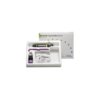lcmlabforum
Well-Known Member
Full Member
- Messages
- 1,476
- Reaction score
- 160
Just a quick survey here, knowing there are so many combinations of factors that can impede that separation,
would everyone chime in on their personal protocol and experience with the following parameters?
1. Type of crown - PFM, eMax or Zirconia
2. Type of abutment - prefab (smooth),custom (esp. if prepared or roughened, or like Atlantis with horizontal grooves),or just Ti-Base.
3. Material of abutment - Titanium, gold, zirconia
4. Type of cement used (if known) - temp cement, Implant cement (Improv or Premier, etc),Zinc Phosphate, Relyx/resin modified glass ionomer (since they have acid that may cause more oxidation) or plain high strength cement like VarioLink or Panavia
5. If special treatment/bonding done - air-abrasion, HF etched intaglio of all ceramic crown.
Protocol:
Predrying time and temperature
How long in the oven and temperature
Any other significant steps, issues, and whether was successful
Thanks!
LCM
would everyone chime in on their personal protocol and experience with the following parameters?
1. Type of crown - PFM, eMax or Zirconia
2. Type of abutment - prefab (smooth),custom (esp. if prepared or roughened, or like Atlantis with horizontal grooves),or just Ti-Base.
3. Material of abutment - Titanium, gold, zirconia
4. Type of cement used (if known) - temp cement, Implant cement (Improv or Premier, etc),Zinc Phosphate, Relyx/resin modified glass ionomer (since they have acid that may cause more oxidation) or plain high strength cement like VarioLink or Panavia
5. If special treatment/bonding done - air-abrasion, HF etched intaglio of all ceramic crown.
Protocol:
Predrying time and temperature
How long in the oven and temperature
Any other significant steps, issues, and whether was successful
Thanks!
LCM


 !
!
